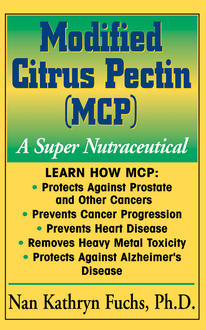Greens Are Good for You! , livre ebook
31
pages
English
Ebooks
2003
Vous pourrez modifier la taille du texte de cet ouvrage
Obtenez un accès à la bibliothèque pour le consulter en ligne En savoir plus
Découvre YouScribe en t'inscrivant gratuitement
Découvre YouScribe en t'inscrivant gratuitement
31
pages
English
Ebooks
2003
Vous pourrez modifier la taille du texte de cet ouvrage
Obtenez un accès à la bibliothèque pour le consulter en ligne En savoir plus
Publié par
Date de parution
01 janvier 2003
Nombre de lectures
0
EAN13
9781591206514
Langue
English
Publié par
Date de parution
01 janvier 2003
Nombre de lectures
0
EAN13
9781591206514
Langue
English
The information contained in this book is based upon the research and personal and professional experiences of the authors. It is not intended as a substitute for consulting with your physician or other healthcare provider. Any attempt to diagnose and treat an illness should be done under the direction of a healthcare professional.
The publisher does not advocate the use of any particular healthcare protocol but believes the information in this book should be available to the public. The publisher and authors are not responsible for any adverse effects or consequences resulting from the use of the suggestions, preparations, or procedures discussed in this book. Should the reader have any questions concerning the appropriateness of any procedures or preparation mentioned, the authors and the publisher strongly suggest consulting a professional healthcare advisor.
Series Cover Designer: Mike Stromberg
Editor: Linda Comac
Typesetter: Gary A. Rosenberg
Basic Health Guides are published by
Basic Health Publications, Inc.
8200 Boulevard East
North Bergen, NJ 07047
1-800-575-8890
Copyright © 2002 by Earl Mindell, R.Ph., Ph.D., and Tony O’Donnell
ISBN 13: 978-1-59120-651-4
ISBN: 1-59120-036-9
All rights reserved. No part of this publication may be reproduced, stored in a retrieval system, or transmitted, in any form or by any means, electronic, mechanical, photocopying, recording, or otherwise, without the prior written consent of the copyright owner.
Printed in the United States of America
10 9 8 7 6 5 4 3 2 1
Contents
What Is Green Power and What Is the Best Way to Use It?
The Top 12 Benefits of Green Power
25 Great Greens
1. Bilberry ( Vaccinium myrtillus )
2. Acerola Berry Juice Powder
3. Astragalus ( Astragalus membranaceous )
4. Spirulina
5. Grape Seed Extract
6. Royal Jelly
7. Licorice Root Extract
8. Siberian Ginseng ( Eleutherococcus senticosus )
9. Suma ( Pfaffia paniculata )
10. Nova Scotia Dulse ( Rhodymenia palmata )
11. Chlorella
12. Apple Pectin
13. Brown Rice Germ
14. Green Tea Extract
15. Bran
16. Sprouted Barley Malt
17. Natural Chlorophyll
18. Dairy-Free Probiotic Culture
19. Milk Thistle ( Silybum marianum ) Extract
20. Echinacea
21. Alfalfa
22. Barley
23. Red Beet
24. Wheat Germ and Sprouts
25. Ginkgo Biloba
Summary of Green Power Benefits
References
About the Authors
What Is Green Power and What Is the Best Way to Use It?
E veryone knows that eating five servings of fruits and vegetables is an important part of getting and staying healthy. Each time we’re reminded that we’re supposed to get our “five a day” without fail, we try anew to add these foods to our busy lives. If we find ourselves succumbing to a cold for the fifth time this winter, we promise ourselves that we’ll find a way to eat better. Sometimes, even a wake-up call in the form of a severe or chronic illness may not give us sufficient motivation to eat enough fruits and vegetables on a daily basis. As easy as the health educators make it sound, getting those five servings of greens every day can be a real challenge in our fast-food-filled, stressful world.
Even if we do manage to include all of those healthy foods in our daily diets, there lies another obstacle that keeps us from achieving optimal nutrition—the ever-decreasing nutritional value of conventionally grown fruits and vegetables. Today, most fruits and vegetables are grown in depleted soil and often genetically engineered to withstand the pesticides and herbicides sprayed on them routinely. In addition, they are usually harvested well before their time to be shipped to places near and far. Conventionally raised produce tends to be much lower in essential nutrients than organically raised or homegrown varieties. However, organic food can be prohibitively expensive and difficult to obtain for the average consumer.
Fortunately, modern nutritional science enables us to create supplements that pick up where our diets leave off. This is why we recommend that you employ what we like to call “green power” to help you in your movement toward optimal health.
Green power is found in the incredible variety and quantity of vitamins, minerals, phytonutrients (plant chemicals with healing properties), enzymes, and fiber that are packed into twenty-five great greens we’ll introduce you to in these pages. The best way to take advantage of green power is to use a supplement packed with these green foods, herbs, and fiber sources. To gain its full benefits, use a powdered supplement that’s cold-processed, with all of its enzymes and nutrients intact. You can add it to your everyday diet by mixing it into a glass of cold juice or water.
While not all of the great greens we’ll address are actually green in color, they are all green in the sense that they come from nature, work in harmony with your body to improve your well-being, and protect you against disease.
The Top 12 Benefits of Green Power
1. Improves energy and vitality by supplying enormous amounts of concentrated vitamin and mineral nutrition.
2. Supports heart and blood vessel health by lowering “bad” LDL cholesterol levels and preventing oxidation of LDL cholesterol by free radicals—a major culprit in the artery damage that leads to heart disease.
3. Protects against type 2 diabetes by promoting blood sugar balance.
4. Greatly increases the body’s antioxidant capacity so that free radicals, created by normal metabolic processes and exposure to excessive sunlight, toxins, and stress, can be neutralized before they contribute to premature aging and disease.
5. Protects against free radical attack and blood vessel clogging in the brain, thereby standing in the way of brain deterioration that can lead to foggy thinking, senility, and Alzheimer’s disease.
6. Guards against liver disease by supporting the detoxification processes of the liver, improving antioxidant power in this important cleansing organ, and helping liver tissues to regenerate after damage by toxins and free radicals.
7. Protects against cancer with an array of natural substances that have been found to prevent, slow, or even reverse the growth of malignant cells.
8. Supports eye health by maintaining good circulation to the retina, which staves off age-related macular degeneration (ARMD), and by improving night vision.
9. Increases fiber intake, dramatically improving bowel function and regularity and substantially lowering risk of colon polyps and colorectal cancer.
10. Increases the number of friendly probiotic bacteria in your digestive, genital, and urinary tracts; these bacteria stave off less friendly bacteria and yeasts that cause infections and protect against common digestive complaints such as bloating, gas, and constipation.
11. Contains vitamins and phytonutrients that have demonstrated ability to boost immune systems function, which means improved protection against bacteria, viruses, parasites, and other pathogens (harmful foreign substances).
12. Balances and harmonizes endocrine (hormonal) function in some cases through the adaptogenic power of the great greens; optimizes your ability to handle stress, and helps your body recover from injury or illness.
25 Great Greens
1. BILBERRY ( VACCINIUM MYRTILLUS )
Most berries pack an amazing nutritional punch. These jewel-colored, delectable fruits—particularly blueberries, cranberries, bilberries, and lingonberries, all part of the same botanical family—are chock full of vitamins and other phytonutrients that protect against disease and support a state of glowing health. The average American has never tasted bilberries, but perhaps it’s time we discovered this quintessentially English fruit—especially those of us who wish we could see better in the dark.
During World War II, pilots who enjoyed jam made from bilberries as part of their daily rations reported a tremendous improvement in their night vision. Today, we know why: phytonutrients in bilberries increase eye microcirculation (the circulation through tiny capillaries) and regeneration of retinal purple, a substance important for night vision and good vision in general.
European bilberry is composed of about 255 anthocyanidin pigments —flavonoids found abundantly in deep red-blue berries. Anthocyanidins enhance the effects of vitamin C, strengthening the walls of blood vessels throughout the body. Many eye diseases, including macular degeneration and glaucoma, arise due to the weakening of blood vessels that feed the retina and optic nerve; a daily dose of anthocyanidin-rich bilberry will help to fortify these vessels so that they can keep all the parts of the eye well-supplied with blood and nutrients. In addition, anthocyanidins and other flavonoids protect the lenses of the eyes from free radical damage that causes cataracts. Flavonoid-rich fruits also inhibit an enzyme called aldose reductase, which is a major cause of diabetes-related cataracts.
Flavonoids like the ones found in bilberries are also great for the lungs, protecting them against damage from secondhand smoke and other airborne pollution. They also support cardiovascular health by strengthening blood vessels throughout the body and reducing the tendency of the blood to clot excessively. Studies have shown that bilberry also protects against stroke and helps to relieve allergy symptoms. In a recent review published in the journal Alternative Medicine Reviews, researchers mention bilberry as part of a supplement plan useful for the management of chronic fatigue syndrome. According to another recent study, components of bilberries and other Vaccinium berries have anticancer activity: they stimulate the activity of enzymes that detoxify carcinogenic chemicals.
2. ACEROLA BERRY JUICE POWDER
Vitamin C was one of the first vitamins to be widely used as a nutritional supplement, thanks largely to the work of Nobel Laureate Linus Pauling. It has long been used to improve immunity, s







